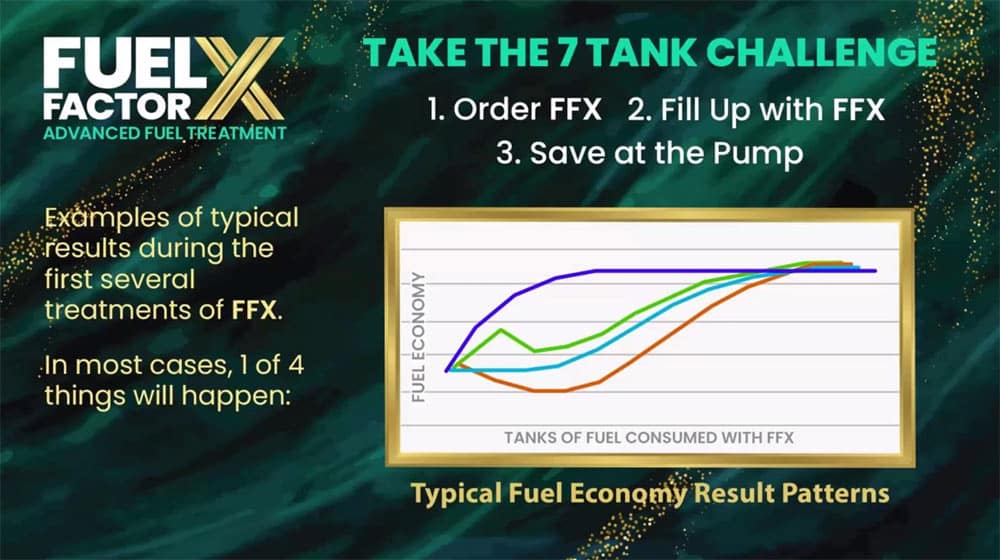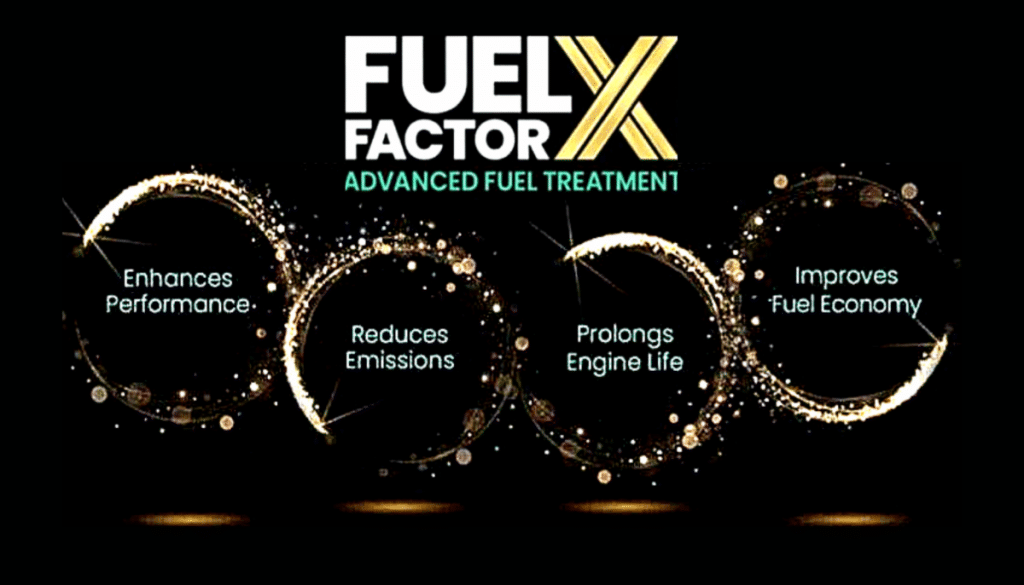Do you want to reduce your vehicle’s emissions and get the most out of your fuel? Fuel Factor X is here to help!
This revolutionary product works by increasing combustion efficiency, resulting in lower emissions. This article explores how this innovative technology reduces vehicle emissions and why it might fit you well.
Have you ever wondered what makes some cars so much more efficient than others? It turns out that it has much to do with their engines’ ability to fully combust fuel. Achieving complete combustion requires precise timing between the spark plug firing and when the fuel enters the cylinder – ignition timing. Unfortunately, our engines often don’t get this timing right, leading to inefficient burning and higher emissions.
That’s where Fuel Factor X comes in. By optimizing engine performance through advanced computer-controlled tuning algorithms, this system ensures that each cylinder receives its optimal amount of fuel at just the right time – achieving maximum combustion efficiency and reducing overall emissions.
With Fuel Factor X installed on your vehicle, you can enjoy better mileage while also doing your part in keeping the environment clean!
Definition Of Fuel Factor X
Fuel Factor X is an innovative technology that helps reduce emissions from engine exhaust. It works by changing the fuel’s molecular structure and adding certain compounds to it, thus making it more efficient when burned. This process results in a cleaner burning fuel with fewer pollutants released into the atmosphere.
This makes Fuel Factor X an essential tool in reducing greenhouse gas emissions and helping protect our environment.
The definition of Fuel Factor X can be broken down into two parts: fuel factor and x factor. The “fuel factor” refers to the properties of a given fuel type that determine how efficiently it will burn in an engine. Factors like octane level, cetane index, and oxygen content affect combustion efficiency for any particular fuel type. The “x factor” refers to the additives or compounds added to a fuel source, such as ethanol or biodiesel, that improve its performance and decrease pollutants released during combustion.
It’s clear why Fuel Factor X is so important; by improving the efficiency of combusting fuels while decreasing their environmental impact, we can drastically reduce global greenhouse gas emissions and help fight climate change.
Without technologies like Fuel Factor X, these efforts would take much longer to accomplish—if they could even be accomplished.
Benefits Of Using Fuel Factor X
The benefits of using fuel factor x are numerous. One significant benefit is that it can help reduce emissions and protect the environment from further damage.
By reducing emissions, we not only save our planet but also improve public health, as fewer toxins enter the atmosphere and affect our air quality.
Using fuel factor x also has economic benefits, such as cost savings for consumers purchasing more efficient cars or appliances with lower energy consumption than traditional models. In addition, businesses may be able to cut their costs by switching to this fuel source. This could lead to greater profits which can be used to invest in other areas of growth or sustainability initiatives.
Implementing fuel factor x globally could have significant environmental impacts on a larger scale. We would see less pollution in the air and water systems, reduced levels of greenhouse gases contributing to climate change, and improved energy efficiency, resulting in decreased resource use and waste production.
All these factors combined would create a healthier planet and better living conditions.
Production And Processing Of Fuel Factor X
Fuel factor x production and processing is an essential part of reducing emissions.
The production methods and techniques used to make fuel factor x directly relate to the environmental impacts of its use. Different types of fuel factor x can be produced with various production processes, each having different environmental implications.
Fuel factor x involves utilizing natural resources or raw materials to create energy-dense fuels. These raw materials are often obtained through drilling or mining operations, which can cause adverse environmental impacts. Additionally, chemical reactions usually occur during refining to extract valuable components from these sources.
This step also has potential environmental consequences, such as air pollution in local communities or water contamination if not properly managed.
The processing techniques used during the refinement stage will affect how much energy it takes to produce fuel factor x and the number of greenhouse gases emitted into the atmosphere when burned for energy generation. For instance, some processes may involve burning fossil fuels like coal and oil to generate the heat needed for refining activities, leading to higher carbon dioxide emission levels than other options available.
On the other hand, newer technologies that don’t rely heavily on combusting fossil fuels may require more electricity but still offer significant reductions in CO2 output compared to traditional methods.
By carefully selecting sustainable production practices and efficient processing techniques, we can reduce both resource consumption and harmful emissions associated with fuel factor x production and usage – ultimately helping us achieve our climate change goals while providing reliable energy access around the globe.
Types Of Emissions Treated By Fuel Factor X
Fuel Factor X is a revolutionary fuel component capable of reducing the number of harmful emissions and air pollutants released during production and processing.
Utilizing this product, factories can significantly reduce their carbon dioxide output by substituting traditional fuels with Fuel Factor X. This reduces greenhouse gases in the atmosphere and helps to mitigate global warming. Additionally, Fuel Factor X effectively eliminates exhaust fumes from motor vehicles that contribute to poor air quality. Thus, using Fuel Factor X as an alternative fuel source offers clear environmental benefits.
The positive effects of leveraging Fuel FactorX extend beyond limiting pollution levels and promote cost savings for businesses that switch to this fuel component.
By helping companies cut back on expenses related to energy use, they can reinvest those funds into other areas that could further enhance their operations or expand their reach.
Furthermore, due to its versatility and affordability, Fuel FactorX has been adopted by numerous public transportation services across many cities worldwide – enabling them to become more efficient while simultaneously decreasing air pollution levels in urban areas.
In sum, utilizing Fuel Factor X as an alternative fuel component provides substantial advantages for businesses and communities at large; it enables us all to take a step towards creating a healthier environment with lower levels of hazardous emissions polluting our skies.

How Fuel Factor X Works To Reduce Emissions
Fuel Factor X is an innovative solution for reducing emissions.
It controls air pollution through a series of processes that reduce the pollutants released into the atmosphere.
Here’s how it works:
* Fuel Factor X filters out harmful particulates from fuel exhaust before they reach the environment, thereby decreasing smog and other airborne pollutants.
* It also captures nitrogen oxide (NOx) and sulfur dioxide (SO2), preventing them from entering the air and damaging ecosystems.
* Fuel Factor X also reduces hydrocarbon levels in diesel engines to meet stringent environmental regulations.
* Finally, its advanced technology ensures precise control over combustion efficiency, reducing emissions.
The process is simple yet effective at reducing emissions without compromising performance or reliability. By using Fuel Factor X, businesses can comply with increasingly strict environmental standards while enjoying reliable operation and improved efficiency. This makes it an attractive option for those looking to decrease their carbon footprint while maintaining cost-efficiency and productivity within the workplace.
Cost-Effectiveness Of Fuel Factor X
Fuel Factor X is a cost-effective way to reduce emissions from vehicles. The production of this fuel factor involves relatively low costs compared to other methods, meaning that the cost savings for producing it are significant. This allows for more effective emissions reduction benefits at a lower cost than traditional means.
The reduced cost of Fuel Factor X also makes it attractive to use as an alternative to higher-priced fuels such as diesel and gasoline. When used consistently, the amount of money saved over time can be considerable. Furthermore, its effects on air quality have been documented in various studies, with researchers concluding that these reductions are both measurable and sustainable when implemented correctly.
Overall, Fuel Factor X presents a viable option for reducing emissions while providing substantial economic advantages. Its ability to significantly lower production costs and reduce emissions make it a desirable choice for those looking to cut their carbon footprint without breaking the bank.
Environmental Impacts Of Using Fuel Factor X
The cost-effectiveness of Fuel Factor X is an essential factor to consider when deciding whether or not to use the fuel.
However, evaluating this fuel’s environmental impacts on air quality and the ozone layer is just as critical. In this section, we will discuss how Fuel Factor X reduces emissions and helps contribute to a healthier environment.
One of the most significant environmental benefits of using Fuel Factor X is its ability to reduce greenhouse gases in the atmosphere. This fuel works by burning more efficiently than traditional gasoline and diesel fuels, resulting in fewer pollutants being emitted into the air. Additionally, Fuel Factor X produces less carbon dioxide than other petroleum products, further reducing emissions and improving air quality.
Fuel Factor X can also positively affect the ozone layer since it does not contain harmful chemicals like chlorofluorocarbons (CFCs). CFCs are known for their role in depleting ozone levels, so avoiding them with alternative fuels such as Fuel Factor X is essential for maintaining healthy atmospheric conditions.
Furthermore, studies show that using clean energy sources such as natural gas instead of fossil fuels can reduce smog formation caused by chemical reactions between nitrogen oxides and volatile organic compounds (VOCs) released from vehicles.
Overall, incorporating Fuel Factor X into our transportation systems provides many environmental benefits, including improved air quality and ozone layer protection due to reduced emissions of greenhouse gases and other pollutants.
With continued research and development efforts toward cleaner energy production, these solutions could become even more prevalent in our everyday lives while continuing to help protect our planet’s fragile ecosystems.
Safety And Health Considerations For Use Of Fuel Factor X
Safety and health considerations must be considered when considering fuel factor x for emissions reduction. It’s essential to understand all potential risks associated with using fuel factor X to protect workers near its usage and the environment. This includes ensuring that any use regulations are followed to ensure minimal risk of harm or injury from exposure to this fuel factor.
The first step towards safely using fuel factor x is establishing clear guidelines.
These guidelines will include steps such as proper installation and maintenance, limits on emission levels, and monitoring systems to detect any issues related to incorrect usage. Additionally, worker training programs can help ensure everyone involved understands how to work around this new fuel factor safely.
Finally, all potential health concerns related to the usage of fuel factor x need to be addressed before implementation.
Careful research needs to be done into any possible side effects, both short-term and long-term, that could result from coming into contact with this substance during its operation or when exposed after disposal. Any dangerous substances found must either have their presence minimized or eliminated before moving forward with usage plans.
Regulations For Use Of Fuel Factor X
These regulations make it clear that different countries have different approaches to regulating the usage of Fuel Factor X.
It is mandated or optional in the US and Canada, depending on specific emission standards. On the other hand, some European countries prohibit its use entirely due to safety concerns.
Ignorance of these rules could lead to severe violations, resulting in fines or imprisonment.
This decisive fuel factor can be used safely and effectively with minimal environmental impact by adhering to all relevant laws and guidelines.
Future Development Plans For Fuel Factor X
Understanding the future development plans for fuel factor x is critical to reducing emissions and achieving cost savings.
As such, several objectives should be prioritized when considering the potential of this technology. First, it’s essential to consider the environmental impacts associated with using fuel factor x.
This means examining how its use may affect air quality or water resources. Second, research needs to be conducted on the most effective ways to reduce emissions while providing a reasonable return on investment. Finally, further assessment should also be done on how fuel factor x can help improve energy efficiency overall.
By better understanding these elements, we can create an actionable plan to move towards more sustainable solutions while minimizing costs and ensuring our environment remains healthy.
Achieving this requires collaboration between stakeholders, including government entities, businesses, and local communities. Through their combined efforts, we can make meaningful progress toward reducing emissions from our transportation sector and creating a more sustainable society for future generations.
Frequently Asked Questions
What Is The Expected Lifespan Of Fuel Factor X?
When looking into Fuel Factor X, its expected lifespan is an essential factor to consider. This includes the durability of Fuel Factor X and its shelf life and usage span. By understanding these three components, one can better understand how long they can expect this fuel factor to last in their operations.
The durability of Fuel Factor X relates to how much wear and tear it can withstand over time with proper maintenance or care. Environmental conditions, handling techniques, storage methods, and even chemical compatibility will all play a role in determining its maximum potential lifespan. Therefore, any user must thoroughly understand these conditions when using Fuel Factor X to realize its full potential for longevity.
Furthermore, Fuel Factor X has a shelf life that determines how long it remains safe for use without degrading significantly. This may include factors such as expiration dates on products or packaging but should always be taken into account when considering the overall lifespan of Fuel Factor X.
Additionally, the usage span of Fuel Factor X must also be considered, which outlines how often it needs to be replaced or serviced after being used for a certain amount of time. All these elements combined determine how long this fuel factor can reasonably provide quality service before needing replacement or attention from users.
In summary, by considering Fuel Factor X’s durability, shelf-life, and usage span, one can get an accurate idea of what kind of lifespan they might expect from this particular fuel factor within their given circumstances.
With knowledge about each component’s role in determining total lifespans, users can make informed decisions regarding their investment in this valuable tool while minimizing emissions reductions.
Are There Any Known Side Effects From Using Fuel Factor X?
When it comes to fuel factor x, one of the most critical questions is whether or not there are any known side effects from using this product. After all, no matter how effective a product is in reducing emissions, it could prove more detrimental than beneficial if its use results in adverse health and environmental impacts.
To begin with, it’s important to note that compatibility between fuel factors can vary considerably depending on what type of engine they are being used for. For instance, some vehicles may require specific blends of fuel factor x, which may have different side effects than other types. It’s, therefore, essential to ensure that the right blend is chosen before use to minimize risks.
Moreover, there are also potential emission reduction effects to consider when considering the side effects of using fuel factor x. While these products can help reduce emissions significantly over time, they can also cause unexpected changes in exhaust gases leading to increased levels of pollutants such as carbon monoxide and nitrogen dioxide. This means careful monitoring should be undertaken during and after installation to ensure emission reductions remain consistent and safe for human health and the environment.
Fuel factor x has been shown to provide significant benefits but only when used correctly and carefully monitored.
As such, anyone considering installing this product should take the time to thoroughly research compatibility requirements and understand potential side effects before taking action. Doing so will enable them to make an informed decision regarding their safety, vehicle, and environment.
How Is Fuel Factor X Distributed To Customers?
Distributing fuel factor x to customers is integral to its success as a product. Its availability and accessibility should be carefully considered when purchasing, delivering, and distributing the fuel. Customers need to know that it is easy to get their hands on this product to maximize its potential benefit.
Purchasing fuel factor x can vary from customer to customer depending on the delivery options available in their area. Some will have access to different distributors or retailers than others, so it’s important for companies selling the product to make sure they cover all bases when it comes to distribution. Delivery services may also play a role, with larger orders requiring more specialized shipping methods due to size and weight restrictions.
Understanding how best to distribute fuel factor x helps ensure that everyone has access to the same quality of product no matter where they live or what type of purchase they want to make. This allows customers who would otherwise not have access to take advantage of all the benefits of using this innovative product.
Additionally, those looking for an easier way of obtaining the item can do so without sacrificing any factors such as cost or convenience. All these elements combine, making it possible for people everywhere to enjoy this great resource.
Does Fuel Factor X Work With All Types Of Vehicles?
Does fuel factor x work with all types of vehicles? This is an important question to consider when considering the potential for emission reduction. Fuel factor x may be a beneficial tool in reducing emissions, but it matters how well its compatibility works across different vehicle types and fuels.
To assess its effectiveness, it’s necessary to determine what fuel types are compatible with fuel factor x. It’s also essential to ensure it can be used across various vehicle models and sizes.
The good news is that fuel factor x has been tested on several platforms, including bus fleets, commercial trucks, and passenger cars. Furthermore, this technology can be applied to gasoline-powered and diesel-run engines. With such broad applicability across these different fuel types, there’s more significant potential for impactful results when using it to reduce vehicle emissions.
It appears that fuel factor x is suitable for use in almost any type of vehicle engine while still being able to yield effective reductions in emissions levels. With its broad range of capabilities and compatibility with different fuels, this innovative product promises real environmental gains through improved air quality worldwide.
Is Fuel Factor X Compatible With Different Fuel Types?
Is fuel factor x compatible with different fuel types? This is an important question to consider when evaluating the efficacy of any emissions reduction technology. Fuel factor x has been designed to work across many different engine and fuel configurations, allowing users to achieve improved fuel efficiency regardless of vehicle type or fuel.
The compatibility of a given system with multiple fuels can significantly impact its effectiveness in reducing emissions. By ensuring it works with various fuels, such as gasoline, diesel, propane, and other alternatives, fuel factor x guarantees maximum savings for customers who need emissions reductions for compliance reasons or want to save money at the pump using less fuel.
Fuel factor x also helps reduce vehicle-related emissions through increased combustion efficiency. It optimizes the performance of engines while running on different fuels, helping them run more efficiently and producing fewer harmful gases than traditional systems.
Furthermore, this technology provides enhanced reliability and longer life cycles than conventional models, adding additional cost savings and environmental benefits. In short, it offers immediate and long-term gains in reduced emissions and fuel savings without sacrificing performance or longevity.
Conclusion
In conclusion, Fuel Factor X is an exciting new technology that provides a viable solution to reducing emissions.
It has the potential to last for many years and can be used in virtually any type of vehicle with its compatibility across fuel types. With no reported side effects, it’s easy to see why this product is becoming increasingly popular among car owners.
Furthermore, Fuel Factor X is conveniently distributed directly to customers, so they don’t have to worry about finding a store or service station which carries it. This makes acquiring the product much easier and more efficient than other methods.
Fuel Factor X could be an excellent option for those looking to reduce their carbon footprint without significant modifications or investments in their current vehicles. Its ease of use and excellent performance make it an ideal choice for anyone who wants cleaner air now!



